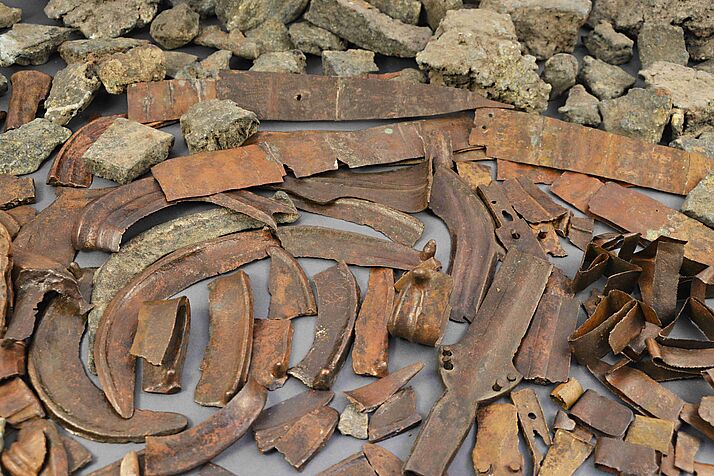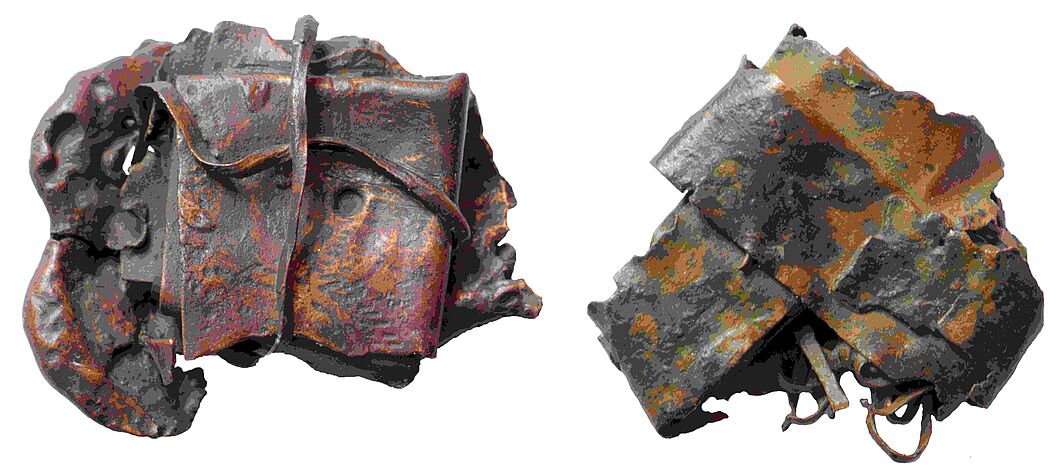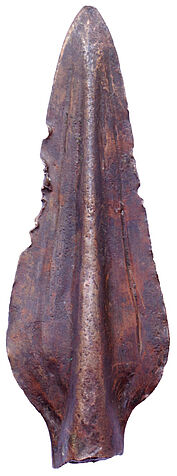Metal exchange networks and hoard biographies in Late Bronze Age Romania
- First archaeometallurgical studies on the metal hoard from Bandul de Câmpie, jud. Mures
PI: M. Mehofer
funded by: HEAS-grant
.
PI: Dr. M. Mehofer, Dr. L. Dietrich
funded by: HEAS-grant
Over the last decades, intensive progress has been made in the study of Bronze Age copper supply and metal exchange networks in Europe. For example, it was possilbe to show that the copper supply of Bronze Age Italy is dominated by the northern Italian copper deposits and that this copper even reached the eastern Mediterranean region and Cyprus. Most recently, significant archaeometallurgical results on the metal trade in the Western and Central Balkans have been published. By means of systematic analysis series on more than 1000 ore, slag and metal samples, we were able to show that not the locally available copper deposits (e.g. in Bosnia) were exploited, but that copper was traded there from mining areas hundreds of kilometers away in Northern Italy (Trentino) and the Hochkönig-Mitterberg, A.
If one examines these Europe-wide copper exchange networks, it comes as a surprise that Romania is nearby a blank spot from the archaeometallurgical perspective and such large-scale systematic investigations are missing. However, the presence of numerous, extremely large Late Bronze Age hoards like Aiud, Guşteriţa II, Şpălnaca II and Uioara de Sus also containing objects with “foreign” typology seems to indicate the influx of “external” metal(objects) in the local exchange networks. Metal and local available salt could be assumed as important factors for the development of the Late Bronze Age hoarding phenomena in the Carpathian Basin and beyond. A few publications, e.g. on the famous Middle Bronze Age Apa hoard, gave first hints that some copper came from the Hochkönig-Mitterberg mining regions in Austria, nearby 1000 km away (Pernicka et al. 2016a, b). Further analysed Early and Middle Bronze Age objects hint to the Slovakian, the Baia Mare or the Apuseni ore Mountains, RO. For the Late Bronze Age such systematic analytical programs on the flow of metal in the Romanian region are completely missing! This project offers the singular possibility to focus on this research gap and target it with a multidisciplinary approach.
In this respect, the large Late Bronze Age hoard from Bandul de Câmpie, jud. Mures, RO (Bronze Age D - Ha A1) will serve as a first case study. The hoard contains nearly 3000 metal pieces and weights approx. 230kg. The typological spectrum comprises ingots, swords, spear, lances, sickles, saws, personal implements, just to mention the most prominent ones. Where its metals were mined and smelted is to date completely unknown. Weather it comes from the Carpathian or Slovakian ore mountains, weather it was traded from Bulgaria or weather it came e.g. via the Danube from the big Alpine copper productions regions is not known.
Questions:
Ø By analytical means it will be examined if the deposited finished products and ingots in the Bandul hoard were obtained from the same mining regions or metal exchange network(s), or if different copper sources supplied metal?
Ø Were the ingots, found in the hoard, used to produce the finished objects or do the analytical data deny such a connection? Can imported pieces be detected?
Ø Are there analytical connections to further metal hoards from Rumania or Hungary?
Ø Can exchange networks e.g. along the Danube river be reconstructed by analytical means?
Ø Which production technology and which traces of use (and destruction) can be documented?
Methodology:
The project aims to analyse copper-based objects for their chemical composition and metal provenance. The sample strategy will cover all typologically significant metal types – raw metal, ingots, semi-finished and finished products. This repertoire will be characterised by chronological and typological diversity and comprises metal types with local and supra-regional distribution pattern. Metals, being suspicious as imports by their morphology or typology will also be targeted. The objects will be photographed, documented and digital 3D-models (by Sfm-structure for motion) will be generated. In a first step, all metals of the Bandul hoard will be examined with a portable ED-XRF device (pXRF, Bruker Tracer 5g) to get an analytical overview. Samples are first analysed by energy dispersive - X-ray fluorescence spectrometry (ED-XRF) for their “geochemical fingerprint” to determine their major-, minor- and trace element concentrations. Out of these, a selection of samples will undergo lead isotope analyses (LIA) to determine the provenance of the used copper.
More to follow……
Collaborators:
- PD Dr. Laura Dietrich, Austrian Archaeological Institute, Prehistory & WANA, research group "Prehistoric Phenomena”, associate researcher, PI at HEAS & Heisenberg Associate Professor at Martin Luther University Halle-Wittenberg
- Dr. Botond Rezi, Mureș County Museum,Târgu Mureș, Romania




